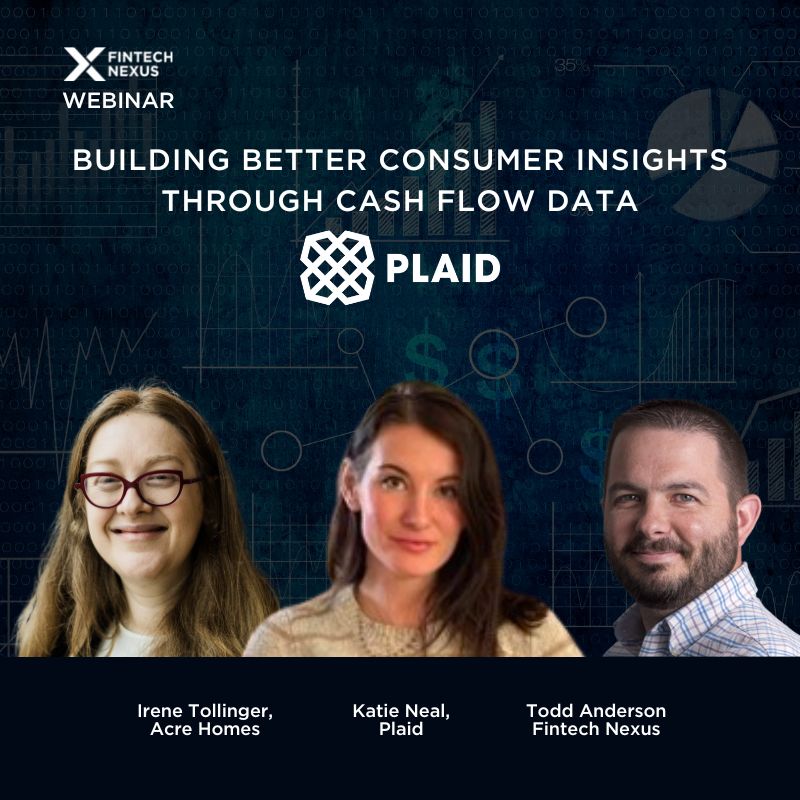Acre Homes aims to build a modern home ownership experience, and with the help of data from Plaid, applications are a breeze.
Like many fintech startups, the team could not have done it without other industry infrastructure, like credit data from Plaid.
“We’ve always thought that there should be something in between renting and having zero ownership and taking out a huge mortgage, levering up your family with debt to own a home,” Irene Trollinger, Co-Founder of Acre, said during a Fintech Nexus Webinar held Aug. 23.
Trollinger described the journey with Katie Neal, Product Marketing Manager for Credit at Plaid, and how they levered open data to build a great app to buy homes.
It’s not rocket science
Hollinger started her career as an engineer at NASA, where she led projects managing complex data, for example, from Mars Mission or space stations. She was a natural technologist and said she knew even during her time with NASA that she would eventually spend time in the startup industry.

Once she established herself, she founded Acre as a new model for home ownership, she said. The product helps homeowners looking for a short-term homeowner experience that returns value to the customer.
Acre buys homes for customers and the new homeowners to get a share and pay off the rest of the price as a type of loan but is not a debt-laden mortgage.
It’s not necessarily their forever home, but for those first few interest-heavy years and a mortgage with kind of higher transaction cost: it’s hard to break even in that world,” she said.
“We’re excited to create a true kind of home ownership experience that returns value to the customer in a meaningful way.”
As she described, the homeowner buys between five and 10% of a home, the “value share,” and Acre gets the rest at a competitive market price.
Customers have a lower monthly payment than a mortgage to pay off the rest and can build on that wealth, Trollinger said, one day to pay off more of the price of the home or cash out.
“Our customers have no debt, a lower monthly payment, debt repayments, as low as 20% Lower.”
They build wealth on their value share and have more flexibility where they can buy the whole home, transfer to another acre home, or cash out. Acre is designed to be a great financial decision for people planning to stay in their homes for three to five years.
Modern approval process
The product’s approvals, credit checks, and data expertise come from Plaid’s open banking hands. Neal handles the flagship credit product but said she began her career at the policy team dealing with regulatory work around open banking.

She said Plaid offers a suite of data products to help companies like Acre build seamless products without investing in data analytics and collection.
“Plaid provides data to companies like Acres and traditional mortgage companies and rent to own company. So they can complete a buyer valuation,” she said.
“We see lenders using a whole host of our products from identity verification to account authentic authentication to move ACH disbursements and process data for fintech lenders and the new underwriting product.”
She said she couldn’t wait for Acre to offer home buying services in New York, where she lives, because they are so far only in North Carolina.
Build vs. Buy: the eternal question
Neal also asked Trollinger why Acre chose to buy Plaids’ help instead of building their own data collection.
“I’m curious why you thought about partnering with Plaid and how that’s helped kick off the process for you as a newer company,” she asked.
“In a way, we didn’t consider build, because of the amount of well, because of the fintech infrastructure that has grown up in the last few years,” Trollinger explained.
Fintech infrastructure has come to the point that a data engineer like Torllinger did not even consider building her in-house system; she said they were not about to add what could have
“It seemed impractical and not strategic. In some ways, it just didn’t cross my mind like it was all we would always use.”
“From our perspective, we are using the assets product and income product,” she said. “Because we are not a lender, we are not restricted by what traditional mortgage lenders or underwriters are. We were able to create our own underwriting process, and from day one, it was wrapped around Plaid.”



